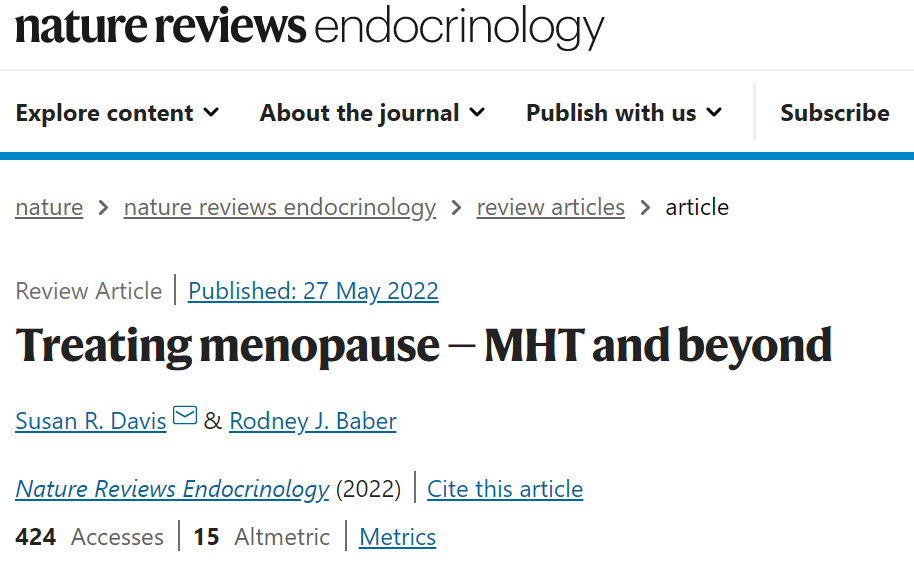预约演示
更新于:2025-05-07
Ethyl Cysteine Hydrochloride
盐酸乙基半胱氨酸
更新于:2025-05-07
概要
基本信息
非在研机构- |
权益机构- |
最高研发阶段批准上市 |
最高研发阶段(中国)- |
特殊审评- |
登录后查看时间轴
结构/序列
分子式C5H11NO2S |
InChIKeyYVKSGVDJQXLXDV-BYPYZUCNSA-N |
CAS号3411-58-3 |
查看全部结构式(2)
关联
100 项与 盐酸乙基半胱氨酸 相关的临床结果
登录后查看更多信息
100 项与 盐酸乙基半胱氨酸 相关的转化医学
登录后查看更多信息
100 项与 盐酸乙基半胱氨酸 相关的专利(医药)
登录后查看更多信息
1,119
项与 盐酸乙基半胱氨酸 相关的文献(医药)2025-03-05·Journal of Agricultural and Food Chemistry
Novel UHPLC-(+ESI)MS/MS Method for Determining Amygdalin, Prunasin and Total Cyanide in Almond Kernels and Hulls (Prunus dulcis)
Article
作者: Doria, Elyse ; Lerno, Larry ; Chen, Mary-Ann ; Huang, Guangwei ; Lee, Jihyun ; Mitchell, Alyson E.
2025-03-01·Nuclear Medicine Communications
Comparison of cerebral technetium-99m-ethyl cysteinate dimer perfusion in patients with dementia with Lewy bodies and Parkinson’s disease dementia
Article
作者: Hung, Guang-Uei ; Zhou, Weihua ; Toyli, Aili ; Sha, Qiuying ; Zhao, Chen ; Chiu, Pai-Yi
2025-03-01·Journal of Genetic Engineering and Biotechnology
Cardioprotective, anti-inflammatory, and antioxidative outcome of costus against bleomycin-induced cardiotoxicity in rat model
Article
作者: Fouda, Maged ; Alrashdi, Barakat M ; Abdelsater, Naser ; Massoud, Diaa ; Askar, Hussam ; Germoush, Mousa O ; Gadelmawla, Mohamed H A ; Alzwain, Sarah ; Salim, Laila M S ; Ashry, Mahmoud
2
项与 盐酸乙基半胱氨酸 相关的新闻(医药)2024-05-23
An older form of hormone therapy taken to ease the symptoms of menopause could increase the risk of ovarian cancer, according to results released Thursday from two studies involving tens of thousands of women. Another hormonal regimen didnt seem to carry this same risk, researchers found.The results should help settle debate over the relative risk of cancer associated with estrogen- and progestin-based hormonal therapy. Still, researchers noted, the absolute risk of ovarian cancer associated with either regimen is low.Before these randomized, placebo-controlled clinical trials, observational studies examining the influence of estrogen plus progestin on ovarian and endometrial cancers gave mixed results, said Rowan Chlebowski, of the Lundquist Institute in California, in a statement on the findings. Our study provides the only long-term information from a randomized clinical trial on two common cancers in postmenopausal women for two of the most commonly used medications.Part of the Womens Health Initiative that began in 1991, the studies ran between 1993 and 1998 and enrolled more than 27,000 women aged 50 to 79 years from across the U.S. The findings, which stem from a 20-year follow-up analysis, will be presented at the American Society of Clinical Oncologys annual meeting, being held in Chicago from May 31 to June 4.For postmenopausal women, hormone therapy has long been used to help manage hot flashes and sleep disturbances. During the time of the studies, the standard option for women who had had a hysterectomy, or their uteruses removed, was conjugated equine estrogen, or CEE. Women who still had a uterus often received CEE plus medroxyprogesterone acetate, or MPA.The WHI studies randomized women without a uterus to either CEE or a placebo, and those who had a uterus to receive CEE plus MPA or a placebo.Results show that CEE was associated with a higher risk of developing ovarian cancer compared to placebo, with 35 cases in the hormone therapy group versus 17 in the placebo group. The risk of dying from ovarian cancer was almost three times higher with among CEE-treated women than in those given placebo.But among women with uteruses who took CEE plus MPA, there was no statistically significant increase in the risk of developing ovarian cancer, or in dying from it. Notably, women on this regimen had a 28% lower risk of developing uterine cancer, researchers found.While this new information is an important part of patient counseling and education, given the low numbers, it should not necessarily impact a woman's decision to take menopausal hormone therapy for symptomatic relief of menopausal symptoms, said Eleonora Teplinsky, a physician at Valley Mount Sinai Comprehensive Cancer Care, in a statement provided by ASCO.CEE was for years a common menopausal treatment. But its use declined following prior WHI findings on associated heart risks that led to Food and Drug Administration warnings.Hormonal therapy is not currently recommended for all postmenopausal women. Groups like the American Cancer Society have previously flagged ovarian cancer risk, while the FDA has highlighted the risk of endometrial cancer. The regulator advises women who do take hormonal therapy for menopausal symptoms to use the lowest dose for as short a time as possible.However, WHI researchers noted that ovarian cancer is not currently incorporated as a risk in prescribing guidelines for menopausal hormone therapy. They also suggested that their findings prompt reconsideration of advice around estrogen-only use in ovarian cancer survivors.Some drugmakers, meanwhile, are developing non-hormonal medications that could become an alternative to hormone therapy for treating vasomotor symptoms. '
临床结果ASCO会议
2022-06-30
·药明康德
▎药明康德内容团队编辑
绝大多数经历绝经期的女性都会面临令人烦恼的雌激素缺乏症状,
绝经期雌激素水平的下降会引起女性身体无症状的生物学变化,并且增加非传染性疾病,如
心血管疾病、2型糖尿病、骨质疏松、特定类型癌症以及抑郁症
的发病风险。值得一提的是,提早绝经的女性这些疾病发生的风险更高。
近日,《自然》子刊
Nature Reviews Endocrinology
发表重磅综述,
围绕绝经的短期和远期影响、绝经相关症状治疗适应症以及绝经潜在治疗药物
进行详细阐述。论文强调,
对于有症状的绝经期女性,雌激素仍然是最有效的治疗方法。
绝经激素疗法(MHT)不仅可以预防骨质流失以及骨折,如果在绝经期早期开始使用,还可用于预防心脏代谢疾病的发生。
截图来源:
Nature Reviews Endocrinology
绝经的短期和远期影响
女性一生中需要经历很多个生理阶段,其中绝经期是女性从生育年龄过渡到老年的阶段。绝经后女性卵巢的功能基本消失,这一过程可能自然发生(自然绝经)或基于医源性因素发生(继发性闭经)。
目前在全球范围内,女性自然绝经的平均年龄为48.8岁,不同地区女性自然绝经年龄差异较小。女性绝经年龄对晚年健康具有重要影响。提早绝经与乳腺癌的发病风险降低有关,但是会增加卵巢早衰相关骨质疏松、心血管疾病和过早死亡的风险。
绝经雌激素水平的下降会诱导衰弱性症状的产生,如
血管舒缩症状(如潮热、盗汗)、焦虑、抑郁、泌尿生殖道萎缩、性功能障碍
。
此外,绝经后雌激素的缺乏也可能带来长期不良反应,其中最值得关注的包括
骨质流失(骨折风险增加)、中心性(腹型)肥胖(增加心血管疾病发病风险)、2型糖尿病(T2DM)以及部分类型癌症
的发病风险增加。
目前最常报告的绝经期症状包括
血管舒缩症状、睡眠障碍、情绪变化、关节痛、肌痛、泌尿生殖道萎缩、认知功能改变和体重增加。
论文强调,
绝大多数女性在45岁至55岁之间绝经,其中高达75%会出现雌激素缺乏相关症状。
尽管目前临床上拥有安全的激素与非激素治疗手段,但是
绝大多数伴有绝经症状的女性并未接受有效的、基于充足证据的获批治疗方法。
绝经人群需要接受治疗的指征
论文强调,雌激素水平下降将导致全身脂肪组织的增加和重新分布(内脏脂肪的比例增高),从而提高绝经人群心血管疾病、2型糖尿病、乳腺癌、子宫癌和结直肠癌的发病风险。
由于绝经相关主要症状以及后遗症主要由于卵巢雌激素分泌减少所致,因此,
基于雌激素、雌激素样化合物的绝经激素治疗(MHT)有望改善绝经期症状,并同时预防绝经期相关骨质流失、心脏代谢不良变化。
▲雌激素水平变化对心脏代谢影响的可能途径(图片来源:参考资料[1])
绝经激素治疗最初的适应症包括绝经期症状的治疗以及绝经后女性(具有较高骨折风险)骨质疏松的预防。
目前绝经激素治疗的适应症主要为绝经期血管舒缩症状。
论文强调,女性绝经症状受到个人健康、社会心理、经济环境等多方面因素的影响,因此需考虑配合其他手段进行综合护理,如
优化生活方式(如提高膳食营养、体能锻炼水平,减少饮酒和戒烟)、治疗慢性疾病相关的风险因素
。
绝经人群的治疗选择
论文强调,
绝经激素治疗(如使用药物替勃龙)是目前绝经相关症状最有效的治疗手段。
在骨密度正常、骨量减少和骨质疏松的女性中,研究证实绝经激素治疗可显著降低受试者髋关节、椎体和其他骨质疏松相关骨折的风险。
此外,对于常见的绝经相关泌尿生殖道萎缩,激素治疗结合非激素治疗手段也可为这部分人群带来积极获益。目前获批的绝经人群全身性激素治疗药物包括:
雌激素类:
结合型孕马雌激素(CEE)、微粉化17-β雌二醇、戊酸雌二醇、雌酮硫酸酯哌嗪、17-β雌二醇经皮吸收制剂、皮下埋植雌二醇、雌二醇凝胶、雌二醇半水合物凝胶;
孕激素类:
微粉化黄体酮、地屈孕酮、屈螺酮、醋酸炔诺酮、醋酸甲羟孕酮、左炔诺孕酮宫内节育系统;
其他类型:
替勃龙、共轭雌激素/巴多昔芬。
对于不同类型的绝经人群,绝经激素治疗方案不同,
具体而言对于接受子宫切除术的女性,应仅以最低有效剂量处方雌激素;对于保留子宫的女性,考虑到长期使用单一雌激素疗法可能会增加子宫内膜增生的发生风险,因此推荐雌激素治疗需与孕激素联合使用。
此外,
绝经期症状的非激素干预措施包括生活方式和饮食调整、非激素类药物、行为和替代疗法。
但是,目前尚缺乏令人信服的证据证实,运动、营养补充剂或富含植物雌激素的饮食可有效缓解绝经相关症状,如血管舒缩症状。
不过,越来越多的临床试验和荟萃分析的证据显示,特定抗抑郁药,如文拉法辛、帕罗西汀等,或可有效缓解绝经期血管舒缩症状。论文也强调,
认知行为治疗有助于减少血管舒缩症状带来的影响,并可能对绝经期人群睡眠和情绪有额外益处。
相关阅读
《柳叶刀》子刊:乳腺癌5年复发风险进一步降低约32%,芳香化酶抑制剂对绝经前患者同样有效!
《柳叶刀》专题:影响女性1/3生命,这个关键时期要保护心脏代谢健康
为什么女性更多得甲状腺疾病?
JAMA
详述女性一生中的生理变化影响
参考资料
[1] Davis, S.R., Baber, R.J. Treating menopause — MHT and beyond. Nat Rev Endocrinol (2022). https://doi.org/10.1038/s41574-022-00685-4
免责声明:药明康德内容团队专注介绍全球生物医药健康研究进展。本文仅作信息交流之目的,文中观点不代表药明康德立场,亦不代表药明康德支持或反对文中观点。本文也不是治疗方案推荐。如需获得治疗方案指导,请前往正规医院就诊。
版权说明:本文来自药明康德内容团队,欢迎个人转发至朋友圈,谢绝媒体或机构未经授权以任何形式转载至其他平台。转载授权请在「医学新视点」微信公众号留言联系。
如有其他合作需求,请联系wuxi_media@wuxiapptec.com

合作
100 项与 盐酸乙基半胱氨酸 相关的药物交易
登录后查看更多信息
研发状态
10 条最早获批的记录, 后查看更多信息
登录
| 适应症 | 国家/地区 | 公司 | 日期 |
|---|---|---|---|
| 鼻窦炎 | 日本 | 2008-09-10 | |
| 排痰困难 | 日本 | 2008-09-10 |
登录后查看更多信息
临床结果
临床结果
适应症
分期
评价
查看全部结果
| 研究 | 分期 | 人群特征 | 评价人数 | 分组 | 结果 | 评价 | 发布日期 |
|---|
No Data | |||||||
登录后查看更多信息
转化医学
使用我们的转化医学数据加速您的研究。
登录
或

药物交易
使用我们的药物交易数据加速您的研究。
登录
或

核心专利
使用我们的核心专利数据促进您的研究。
登录
或

临床分析
紧跟全球注册中心的最新临床试验。
登录
或

批准
利用最新的监管批准信息加速您的研究。
登录
或

特殊审评
只需点击几下即可了解关键药物信息。
登录
或

生物医药百科问答
全新生物医药AI Agent 覆盖科研全链路,让突破性发现快人一步
立即开始免费试用!
智慧芽新药情报库是智慧芽专为生命科学人士构建的基于AI的创新药情报平台,助您全方位提升您的研发与决策效率。
立即开始数据试用!
智慧芽新药库数据也通过智慧芽数据服务平台,以API或者数据包形式对外开放,助您更加充分利用智慧芽新药情报信息。
生物序列数据库
生物药研发创新
免费使用
化学结构数据库
小分子化药研发创新
免费使用